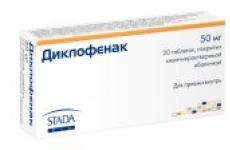An irreplaceable helper for those who like to solder: “Third hand. Third hand for soldering Third hand for Soviet times
Often, when soldering small circuits or individual elements, there are not enough hands to simultaneously hold the wiring or a circuit element, solder, a soldering iron, sometimes a flashlight or a magnifying glass, so the circuit also strives to run away somewhere when soldering. In such situations, the Third Hand comes to the rescue. Many people make such adaptations on their own according to their needs.
I decided to make such a device without going too far beyond the scope of its application. Rather, making it versatile and with an aesthetic appearance.
Video recording step by step assembly and a test fixture for familiarization.
Materials and tools
1.2 crocodiles with insulation;
2. Details from an old compass;
3. The bottom of the aluminum can;
4. Base for stability made of plastic, wood or metal;
5. 3 flexible legs “Goosenecks”, 20cm each;
6. Heat shrinkage 3mm and 5mm;
7. Insulating tape;
8. Hot melt glue;
9. Superglue.
From tools:
1. Pliers;
2. Thermal gun;
3. Lighter;
4. Scissors.
Making a third hand
We need 3 flexible Goosenecks legs, 20cm each. I took them from a USB flashlight and USB fan bought in a fixed price list for 60 rubles. The USB flashlight has a flexible leg of 39 cm, it can be cut in half by biting with pliers or wire cutters to obtain 2 x 19 cm.



The USB fan has a 23 cm leg, so we will leave it that way.


Now you need to find a suitable base for the stability of the structure. I was lying around plastic case from a quartz table clock, I will use it.


It is better to take something heavier, depending on your needs. I will not attach large boards from tablets and heavy objects there, so a plastic one will do.
We make 3 holes at the base for flexible legs.

Since hot glue does not adhere well to metal, we will use electrical tape. We wrap the ends of the flexible legs with electrical tape, which will be fixed at the base. This will then allow the flexible legs to be well fixed at the base.

We take 2 crocodiles and put a 3 mm heat shrink on the teeth, as shown in the photo. This is so that metal prongs do not damage the elements on the boards, the winding of wires and do not leave marks on objects that will be fixed by crocodiles.


Glue the crocodile to the end of the flexible leg with super glue. We do not regret the glue) After the glue dries, we put on a 5 mm heat shrink (it will give a good fixation of the crocodile with a flexible leg) as shown in the photo. And we repeat the same with the second leg and the crocodile.

From the old compass we get such a thing with a fixing bolt and nut.

Glue the fixing bolt with super glue inside the flexible leg (it just goes there). Do not regret glue) This will be a universal leg that can be customized and applied to fit your needs. In my case, there will be an additional clamp for wiring or light bulbs and a clip (where the lead is inserted) for the solder wire.

We insert the resulting flexible legs onto the base into the prepared holes, glue with super glue. After the super glue has dried, fix it abundantly with hot melt glue.


You can make 4 legs with hot melt glue, for better stability and anti-slip on the table surface.

I thought about how to take the empty space on the base and decided to make a place for small things necessary for soldering or for pushpins, paper clips, or something else.
The bottom of the aluminum can fit very well. It is necessary to trim the edges, round off the corners and fix with hot melt glue on the base.


Can be used for cargo (for example, a hefty nut)), if I still cling to large boards or heavy objects)

That's all you are done.
In the case of "The Third Hand" has shown itself not bad. Copes with the task. Holds the circuit well, does not slip. In the photo, the light bulb is weak (there was no other), you can cling and more powerful. The adjustment is convenient, the hot melt glue holds the base of the legs well.


Many people cling to lenses and fans. I refused it. Sometimes it takes up a lot of table space when not in use.
This design and appearance allows you to leave the fixture on the desktop and use it for other purposes. With the help of a universal flexible leg, you can change the design and add the necessary elements (the same fan, magnifying glass, flashlight, another crocodile, diagram drawing), depending on the purpose of use.
By the way, the remaining fan can also be used. In a couple of minutes, making a desktop battery out of it.
As planned, can be used for more than just soldering.
For example, cling notes with important tasks for the day or a card so as not to forget.

Even the phone holds confidently. I did not plan for such a purpose) Nice addition)


I have no doubt that in the process of using it I will find more than one application for this device.
I have been looking closely at this device for a long time, but I could not bring myself to buy. It seemed too expensive, for such a fit for a poor Belarusian. Moreover, I do not solder so often. But after I finally got my caliber soldering iron, it was decided to stock up on a lot of pribludes for soldering. The long-desired so-called "third hand" also made it to this list.
We receive the parcel, unpack it and see such a constructor:


Actually, what is available here:
Illuminated plastic lens
Crocodiles with lambs
Bed (with a black coating that I do not understand), in which you can put napkins for cleaning the soldering iron tip
Soldering iron holder and connecting rod set
Let's take a closer look at the lens.
In the lower part, at the base, there are two LEDs, the purpose of which is to illuminate the soldered object.

Above there is a compartment for three AAA batteries, equipped with a tape for easier removal. On the side is a slider for turning on the backlight.

The lens size is impressive. She's big. I would even say huge, against the background of the main dimensions.

We insert the batteries by intertwining them with tape.

Turn on the backlight. In general, it shines quite well.

We proceed to further assembly. The holder is in the bed and fixed with a locking screw.

The most difficult thing was to assemble a barbell with crocodiles. It was necessary to simultaneously fix two hinges between the plates. They constantly tried to jump out.

Then everything is much easier. We insert a vertical bar into the frame and hang a lens and a bar with crocodiles on it.
Assembled




After the soldering iron was installed in its rightful place, some peculiarity of the holder came to light. It turned out to be too big for a soldering iron in diameter and it just fell through, trying to bury itself in the bed. What is not good.


You can fight this business in two ways: either put the soldering iron as shown below in the photo; or make some kind of modernization. Because, each time inserting the soldering iron into the holder and at the same time trying to fix it somehow not comme il faut. Moreover, if you then touch the cord with something, then it will clearly fall into the position, as in the photo above. 
Modernization by compressing the spring at the end, in order to reduce the diameter, is immediately eliminated. Not only is the last turn soldered to the rack, but it is also soldered to the previous turn. In general, in the future, you will have to somehow finish.
Another bad feature of this creation is poor stability. This is primarily due to large size lenses, and as a result, with a decent weight. Therefore, if you turn the lens to the side, then the whole structure, in obedience to the teachings of Archimedes, strives to fall on its side. Something like this.

Here either apply the next "doping", increasing the area or weight of the bed, or try during work to ensure that nothing outweighs anywhere. Or even remove the lens if it is on this moment need not. Fortunately, it takes two or three seconds. I haven’t even decided yet whether I’ll eliminate this drawback, or it doesn’t bother me so much.
Crocodile springs are quite tight. They keep them thoroughly. For demonstration, I clamped a knife in one of them in the middle of the blade. And nothing, the crocodile did just fine.

Summarize. I liked the subject of the review. I don’t regret buying. Despite a couple of disadvantages: large diameter soldering iron holder and low stability. The workmanship suits me. On old job we had a "third hand" in the laboratory, and so it is, compared to the monitored one, just slag. Perhaps the disadvantages include the price. Not that much, but not cheap either, especially considering the current state of affairs in the economy. If you wander through the vastness of Chinese online stores, you can find many variations of such a device. With two lenses, backlit gooseneck, battery powered, mains powered and more. Some are slightly cheaper, while others are slightly more expensive. By the way, offline, in any case in our Minsk, you can find a similar product at a comparable price, or at an exorbitant price. To be honest, I don't even remember why I chose this particular model.
Thank you all for your attention.
Device for mounting radio circuits


In the fixture, the clamps are fixed to a massive post with a screw. One of the legs of the clamp fits into the groove of the rack and is pressed with a screw through the washer, and the second leg is free and allows you to clamp the parts.

Such a fastening allows the clamp to be rotated or moved along the groove, while the part remains clamped in the jaws. It becomes possible to remove an unfinished product from the stand, put it aside without unclamping the clamp, install another clamp with a new product and return to the first one at any time. Several works can be done in parallel on one device. There would be clamps.
Two clamps can be installed in the device, which is sometimes necessary. A fourth hand appears, as it were. Comfortable.

Buying clamps is not a problem. It is impossible to name the address, since the Internet is literally inundated with offers. Prices from 100 rubles. There are up to a thousand, but the latter, most likely, with carbide jaws and for our purpose they are not needed.
Recently I needed to make a charging circuit for a lithium battery, it was so inconvenient to solder wires to it that I decided to fix it with my next homemade product, namely, with a "third hand", which will allow not only conveniently soldering wires and circuits, but also holding other components when soldering. Also, by making it ourselves, we save as much as 500 rubles, which is the average cost of a "third hand" in a radio store in the central part of Russia.
This homemade product does not require any special skills, so even a beginner will be able to make it.
In order to make a "third hand" with your own hands you will need:
* Parquet or board
* Bolts М4
* Lamb, I removed from the Soviet training potentiometer
* Iron plates
* Two corners
* Clips "crocodile"
* Gas-burner
* Tin solder and soldering acid
* Epoxy resin
* Electric drill
* Heat shrinkage or wire insulation
* A couple of washers
That's all you need to assemble the soldering helper.
Step one.
First you need to decide on the size of the platform, on which the entire structure will be installed afterwards. My choice fell on the oak parquet pieces, since this is not the first time I have known this material and I know that it will serve for a long time. When choosing a material for the base, pay attention to its weight, since a small weight will make the whole structure unstable, which is not good.
After I decided on the material, armed with PVA glue, I glued the two parts together, in the end I got a square platform that weighs 200 grams. Then I wrapped it with nylon thread and left it for a couple of hours until the glue completely hardened.
Step two.
Now you can do the fastening to the platform, I did not think for a long time and decided to use the M4 screws, since their rigidity will be quite enough. And to attach these screws, I drilled two holes through the base with a 4 mm drill and a 6 mm drill to the middle, after which I drove the screws with back side so that only the thread appears from the outside, its length of 10 mm is enough to screw the lambs onto it. On the back of the board, I filled in the same holes with a diameter of 6 mm epoxy resin so that the screw does not turn and fall out in the future.

Step three.
In order to attach the levers in the future to these threaded pins protruding from the base, it is necessary to make corners. I cut them out of a large corner using a metal hacksaw, the plate thickness of this corner is 1.5 mm. And so that, on the other hand, when tightening, I do not constantly keep the screw from turning, I soldered it with the simplest tin solder, using a gas torch and soldering acid.



Such a connection turns out to be quite strong, there will be no large loads in any case on such a homemade product. The second corner is made in the same way as the first.
Step four.
When the base with the fasteners is ready, we turn to the levers themselves, which will be adjusted using the lambs, which I twisted from the Soviet potentiometer. I made the levers from a metal plate, 1.5 mm thick, holes were already made in it, so I didn't have to drill anything.

You will need two such plates, but if you want to expand the functionality of your homemade product, you can make more levers.
Step five.
Since the homemade product provides for precise adjustment of the clamps during soldering, the presence of a second lever is required. In any case, one lever is indispensable. The second arm will consist of the same plate as the first, but have a screw at one end and a nut at the other. All these parts are successfully soldered to the plate, all that is needed at this stage is a gas torch, some tin solder and soldering acid.




After soldering the parts, rinse them with industrial alcohol or a similar solvent.
You will need two such levers, one for each clamp.
Step six.
It's time to make clamps that can be easily installed in the levers and adjusted, both in height and position relative to the part being clamped, vertically, horizontally or at a certain angle. Nothing smarter came into my head how to make this option using a hairpin and a lamb, which will counter the clamp in the required position. I made the hairpin from the same M4 screws with which I sawed off the heads with a hacksaw for metal. Further, all the same way, we tin the hairpin and with the help gas burner We solder it to the crocodile clip, which I bought at the radio store for only 6 rubles.



We carry out the same operations with the second clamp. For better fixation, place a washer of a suitable diameter under the thumbscrew.

Step seven.
When I checked the clamps for how they hold parts and wires, I decided that their metal ends needed to be insulated, which would not only eliminate the components shorting during soldering, but also reduce the chance of slipping. Since I did not find heat shrinkage of a suitable diameter, and going to a radio store for more than 3 km is not the most pleasant pleasure, I took insulation from an old Sony wire, its quality was good enough for my homemade product, and in terms of diameter everything fell like from the factory.

Now with such a rubber backing, the clamps hold parts and wires more confidently.
We collect all the details into a single whole.







At this, the home-made "third hand" is ready, I am very pleased with it, since after I made it, she helped me out more than once. It is a pleasure to solder with it, the wires do not need to be held with your hands, and at someone they sometimes tremble, which does not allow anything to be soldered at all.
I very often have to solder, and sometimes it is not very convenient to do it. Large parts can be squeezed in a vice, but you can't do that with small ones. For this there is a device third hand, but I did not want to buy such a toy in the store, I decided to make it myself from the scrap at hand.
This creation began with a stand. Cut a rectangle out of centimeter plywood:

And I immediately wondered how to fix the bar on the base and then attach horizontal racks to it. For good reason, it was necessary to cut a thread and secure it with a nut, but the necessary die was not found. I had to get out of the situation ...
To secure the stand at the base, I found a bolt with a longitudinal hole. It was less diameter bar, I had to grind it a little:

To fasten the horizontal struts, I found a long nut (found in Soviet cassette recorders) and carved a bed for it at the end of the bar:

I wanted to fix the nut with threaded connection, but the drill stubbornly did not want to make a hole in the end, it had to be done in this way.
The assembly is ready for assembly:

For the strength of the connection, I put a tube on the bar and made a cut in it:

And he began to solder the nut:


Now let's move on to securing the bolt. We grip the part in a vice and start soldering from above:


The part is ready:

Now what do we need to do? That's right, you need to connect the upright and the base. To do this, I cut out another auxiliary part - a rectangle made of 4mm plywood:

I drilled a hole in the base with a feather drill. I also made holes in the auxiliary plywood backing and found 4 self-tapping screws. Everything is ready for assembly:


The floor is done, the base with the vertical stand is ready. Moving on to the second part - creating horizontal posts, clamps and a magnifying glass.
These metal plates, pins and bolts with washers are the future arms of our device:

To fasten them, I use these bolts with washers soldered to them (for the convenience of unscrewing / twisting):

But I got these details out of hard disk(magnet stands). I cut the thread with a tap and got nuts that are convenient to tighten by hand:

And the most important thing is the clamps. I soldered the bolts to the ends to secure and rotate around the axis:

We begin to collect the nodes of our mechanism.
Holder No. 1
Details of the node:

Assembly unit:

Holder No. 2
Details of the node:

Assembly unit:

Magnifying glass holder
Details of the node:







